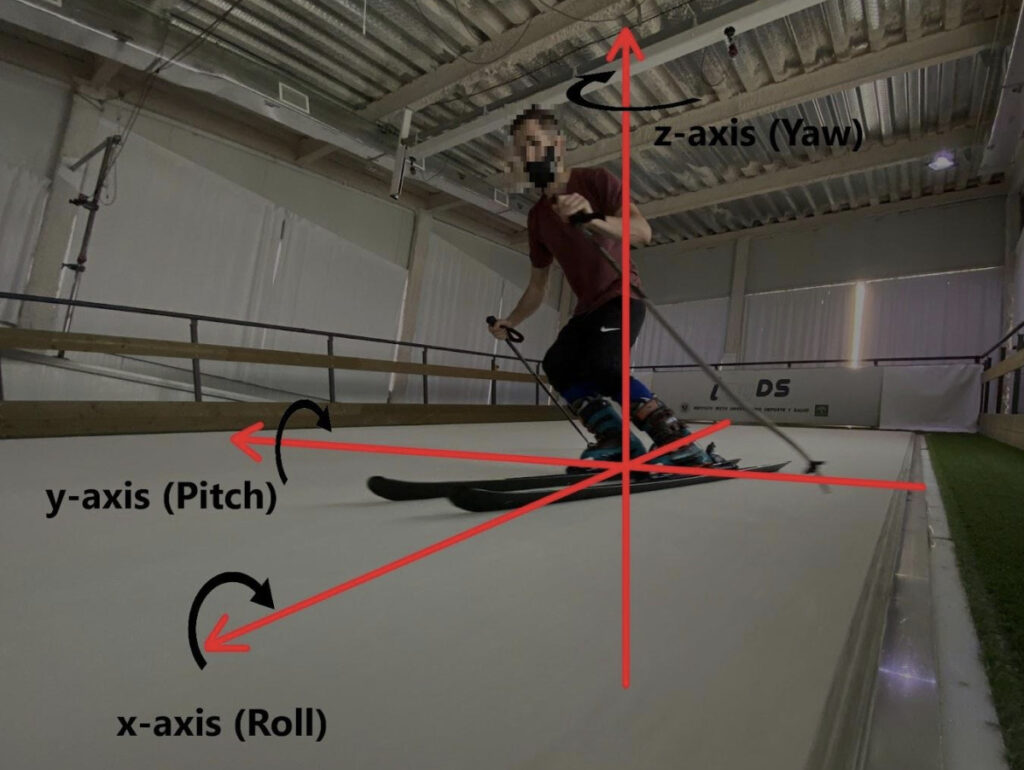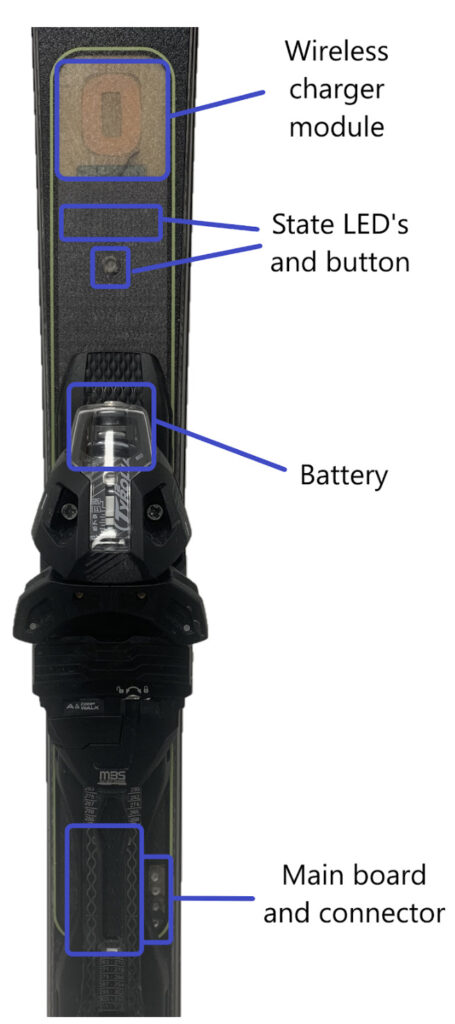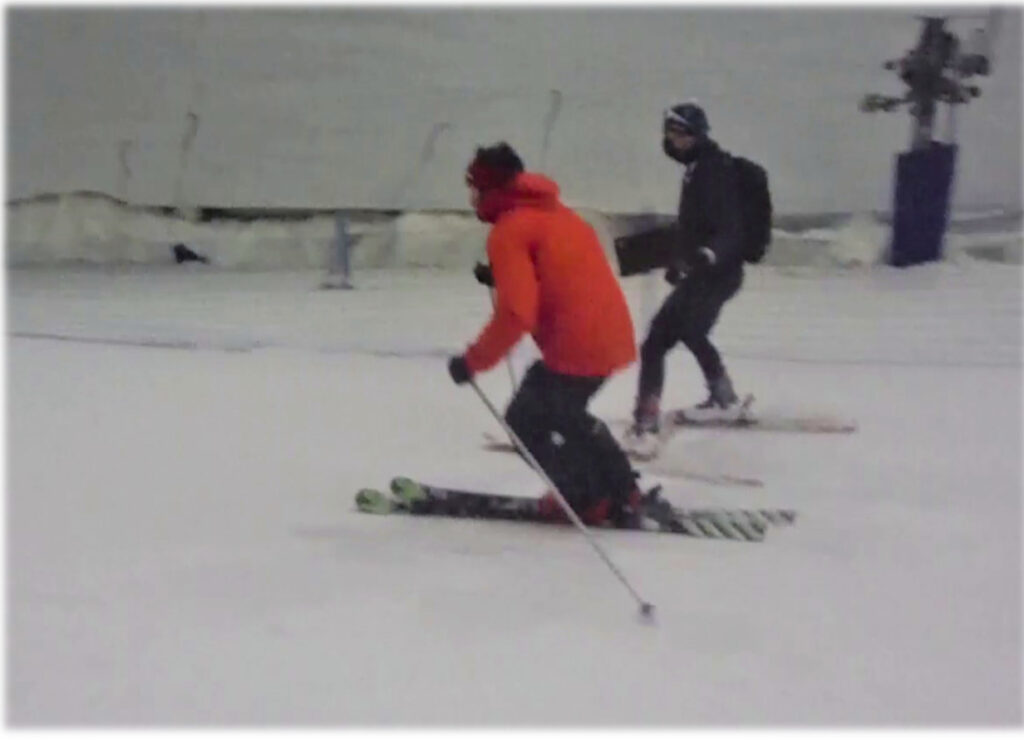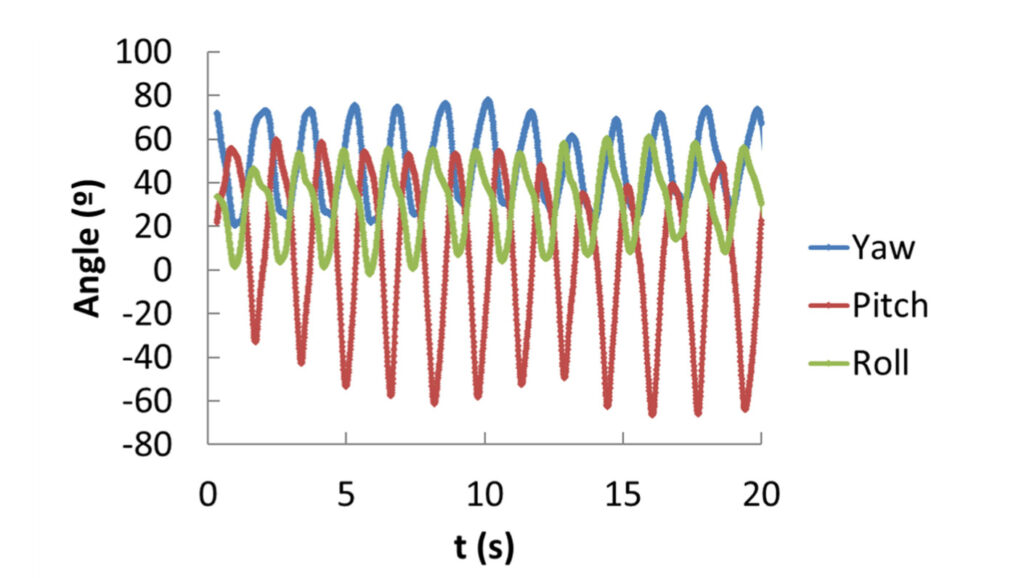SMART ALPINE SKIS
INTRODUCTION AND MOTIVATION
The use of new technologies is increasing in all the sports, introducing a set of new capabilities to improve technique or reduce injuries. In alpine skiing, to evaluate each turn, information about angles, acceleration, and time is very useful. Using an Inertial Measurement Unit (IMU), these data are available. Our research group have developed and validated an inertial system in a ski simulator.
DEVELOPED PROTOTYPE
All the electronic components have been integrated in the skis during the manufacturing process by the company Kustom S.L.
The main characteristics of the system are:
Ski weight remains unchanged.
Power autonomy above 3 hours.
The ski has a wireless charge module.
The communication protocol used is Bluetooth.
Three LED’s inform the user about the operation mode, Bluetooth connection, and charge state.
A button has been included to wakeup the system and change the operation mode.
Information about angles, time, and acceleration is sent to the user in real time.


RESULTS AND CONCLUSIONS
All the electronic components have been integrated in the skis during the manufacturing process by the company Kustom S.L.
The main characteristics of the system are:
First pair of skis successfully manufactured and tested.
Frequency sample up to 200 Hz.
A connector to allow the system reconfiguration has been introduced in the first prototype.

The obtained data correspond with our previous work where we developed the electronic system.
Asymmetries in technique can be easily detected.
Errors in technique can also be detected by trainers.

Current work is focused on the development of a smartphone application to improve usability of the system and provide immediate feedback to the users.

PEOPLE AND INSTITUTIONS INVOLVED
Isidoro Ruiz-García1
Ismael Navarro-Marchal2
Juan A. Moreno-Pérez1
P. Lorenzo Uhrich3
Alberto J. Palma1
Pablo J. Gómez-López2
Miguel A. Carvajal1
1 ECsens, Department of Electronics and Computer Technology, Sport and Health University Research Institute (iMUDS-UGR), Research Centre for Information and Communications Technologies (CITIC-UGR), University of Granada, 18071 Granada, Spain.
2 SkiingLab, iMUDS, Department of Physical and sport education, Sport and Health University Research Institute (iMUDS-UGR), University of Granada, 18007 Granada, Spain.
3Kustom Skis S.L., Calle Pérez Ayuso, 9, 28002 Madrid, Spain
This work was partly supported by Consejo Superior de Deportes through projects Sensor for Sport Monitoring and Sensor Sport Lab, “Redes de Investigación en Ciencias del Deporte” years 2021 and 2022, and European Regional Development Funds (ERDF).
Thanks also to Kustom Skis for allowing the prototype ski manufacturing at their facility.




